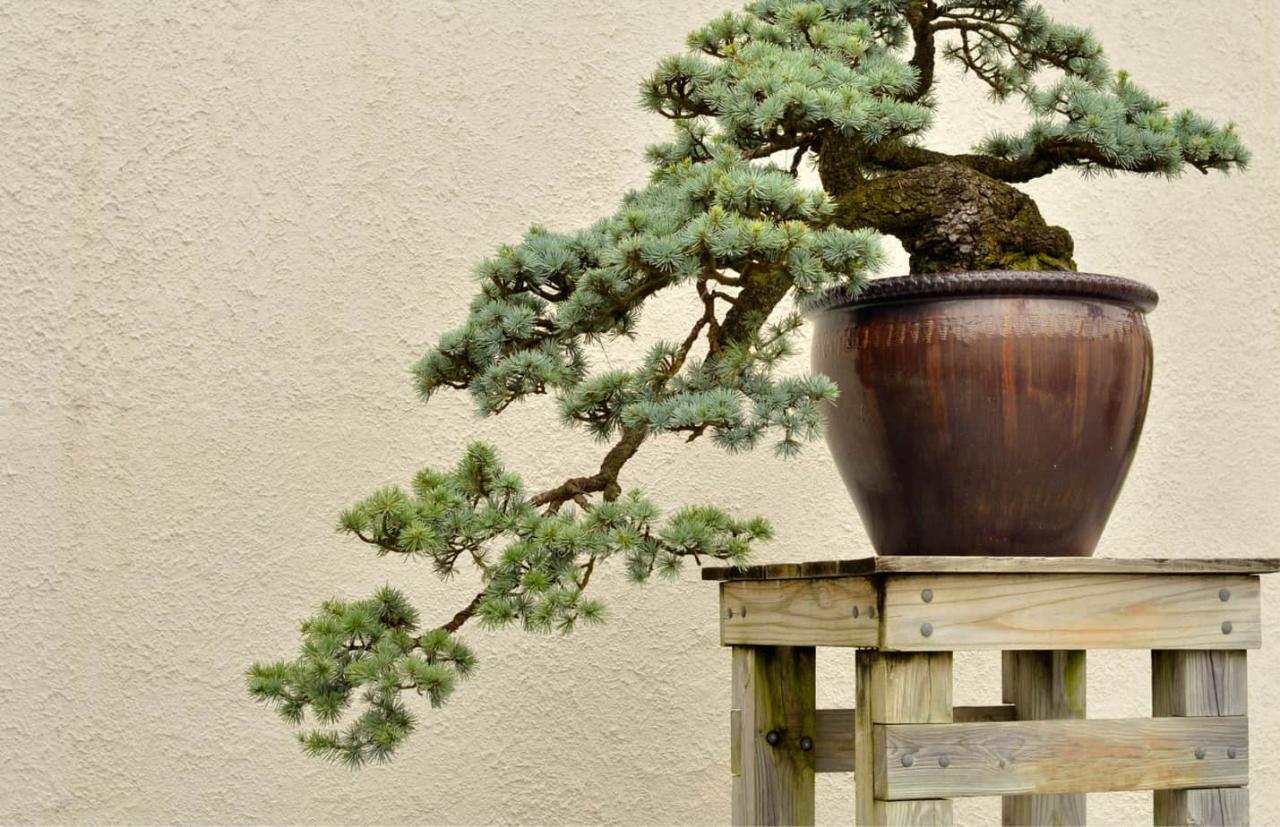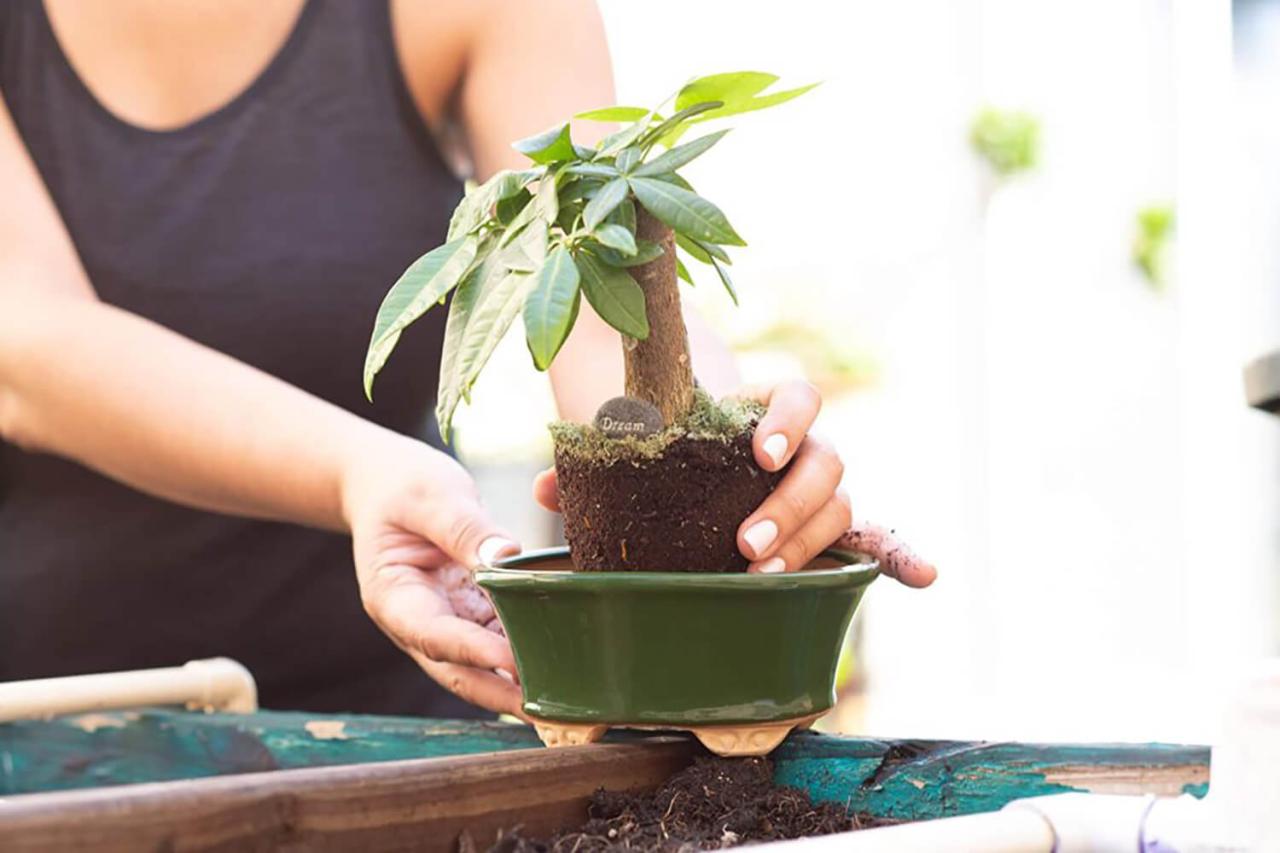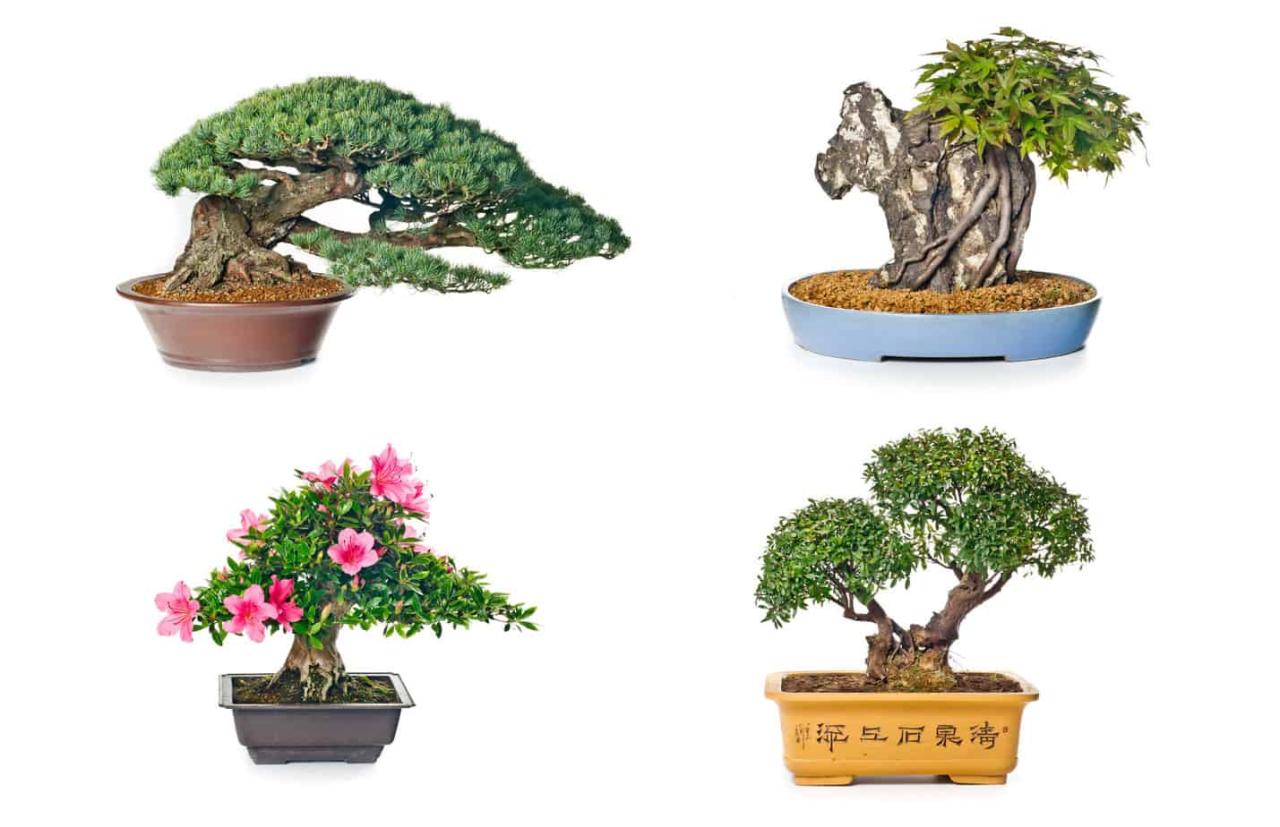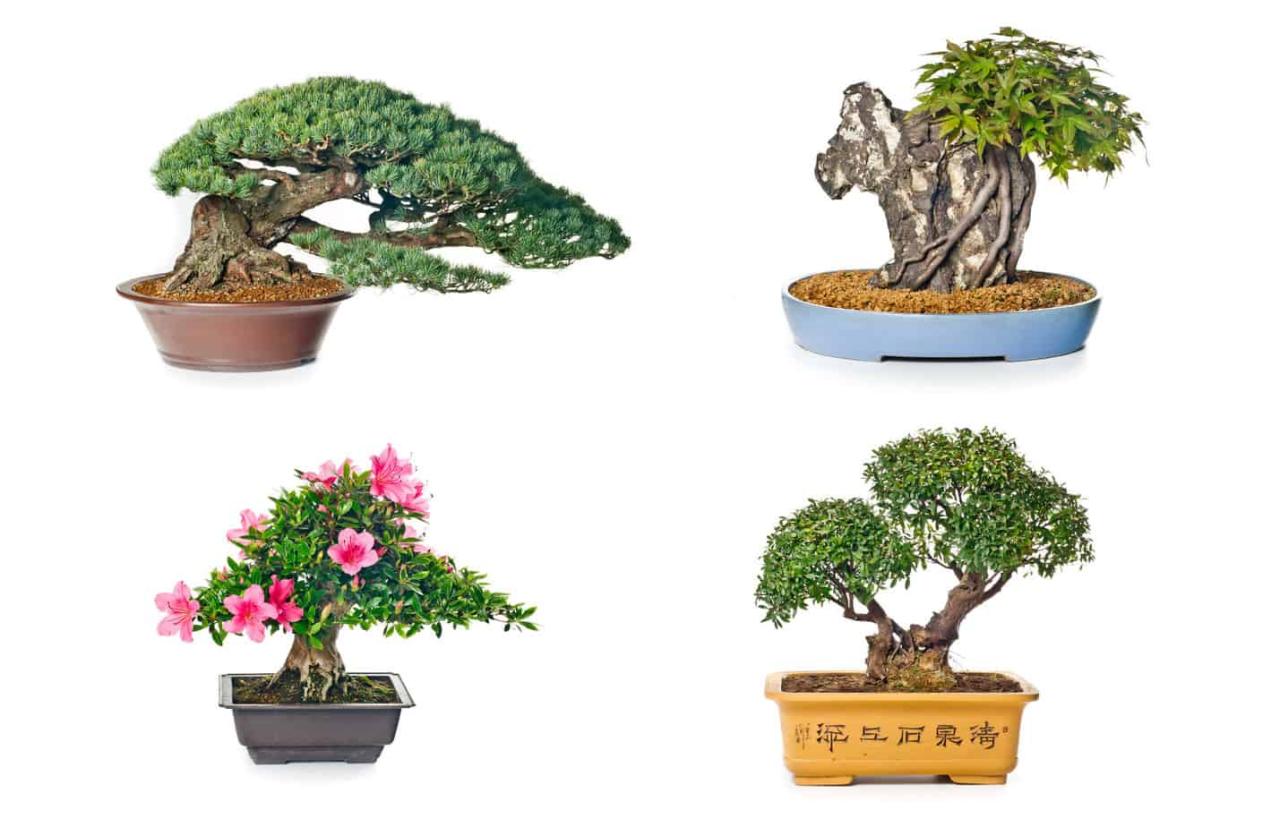Top Tips for Picking the Perfect Bonsai Pot is more than just selecting a container; it’s about finding the perfect complement to your bonsai tree. The right pot not only enhances the aesthetics of your bonsai but also plays a crucial role in its health and longevity.
This guide will walk you through the essential factors to consider when choosing a bonsai pot, from understanding the basics to matching styles and ensuring proper drainage.
Choosing the right bonsai pot is a critical step in the bonsai journey. It’s more than just selecting a container; it’s about finding the perfect complement to your bonsai tree. The right pot not only enhances the aesthetics of your bonsai but also plays a crucial role in its health and longevity.
This guide will walk you through the essential factors to consider when choosing a bonsai pot, from understanding the basics to matching styles and ensuring proper drainage.
Understanding Bonsai Pot Basics

The bonsai pot is more than just a container; it plays a vital role in the overall health and aesthetics of your bonsai tree. The pot’s design, size, and material all contribute to the tree’s growth, health, and visual appeal.
Choosing the right pot is crucial for cultivating a thriving bonsai.
History of Bonsai Pots
Bonsai pots, known as “bonsai-uchi” in Japanese, have a rich history intertwined with the art of bonsai itself. The origins of bonsai pots can be traced back to ancient China, where potted trees were used for decorative purposes. As the art of bonsai evolved in Japan, so too did the design and style of bonsai pots.
Traditional Japanese bonsai pots, often made of unglazed ceramic, feature a variety of styles and designs, each reflecting a particular aesthetic and historical context.
Materials Used for Bonsai Pots
Bonsai pots are crafted from a variety of materials, each with its own advantages and disadvantages.
- Ceramic: Ceramic is the most common material used for bonsai pots. It is durable, porous, and comes in a wide range of colors, glazes, and styles. Ceramic pots allow for good drainage and air circulation, which is essential for healthy bonsai growth.
The porous nature of ceramic helps to regulate moisture levels, preventing the soil from becoming waterlogged.
- Stoneware: Stoneware is a type of ceramic that is fired at higher temperatures, making it more durable and resistant to heat and cold. Stoneware pots are often used for larger bonsai trees and can be found in a variety of styles and finishes.
- Terracotta: Terracotta is a type of unglazed ceramic that is known for its earthy, rustic appearance. Terracotta pots are highly porous and allow for excellent drainage. However, they can be prone to cracking if exposed to extreme temperature fluctuations.
- Wood: Wooden bonsai pots, often made from hardwoods like oak or cedar, offer a natural and elegant aesthetic. Wooden pots are generally more expensive than ceramic pots, but they can add a unique touch to your bonsai collection. They are less porous than ceramic and may require more frequent watering.
- Plastic: Plastic bonsai pots are affordable and lightweight, but they are not as aesthetically pleasing as ceramic or wooden pots. Plastic pots are generally less porous and can trap moisture, which can lead to root rot if not properly managed.
However, plastic pots can be a good option for beginners as they are less expensive and easier to care for.
Matching Pot Style to Bonsai Style
Choosing the right pot can elevate your bonsai’s beauty, creating a harmonious visual balance. Just as a stunning frame enhances a masterpiece, the pot complements the bonsai’s style and form. This careful selection amplifies the bonsai’s aesthetic appeal, allowing it to truly shine.
Bonsai Styles and Their Ideal Pot Pairings
The pot style should enhance the bonsai’s overall visual appeal. This involves considering the bonsai’s shape, size, and style, and choosing a pot that complements these elements. Here’s a look at some common bonsai styles and their ideal pot pairings:
Formal Upright
Formal upright bonsai, with their symmetrical and balanced structure, are often paired with rectangular potswith a formal appearance. These pots, typically made of ceramicor stone, provide a sense of stability and structure, echoing the bonsai’s upright form.
For example, a formal upright Japanese black pine (Pinus thunbergii) would look stunning in a rectangular, shallow, unglazed pot with a textured surface.
Informal Upright
Informal upright bonsai, characterized by their slightly asymmetrical and more natural appearance, are often paired with oval or round pots. These pots, available in various materials, offer a softer, more organic feel that complements the bonsai’s natural flow.
For example, an informal upright Japanese maple (Acer palmatum) would look striking in a round, glazed pot with a subtle color variation.
Cascade
Cascade bonsai, with their dramatic, cascading branches, often look best in oval or rectangular pots with a deep base. These pots, typically made of ceramicor stone, provide a sense of depth and space, allowing the cascading branches to flow gracefully.
For example, a cascade Japanese white pine (Pinus parviflora) would look magnificent in a deep, rectangular, unglazed pot with a textured surface.
Slanting
Slanting bonsai, with their dynamic, angled forms, are often paired with oval or rectangular pots with a slightly angled base. These pots, typically made of ceramicor stone, provide a sense of movement and energy, echoing the bonsai’s slanted form.
For example, a slanting Chinese elm (Ulmus parvifolia) would look impressive in a rectangular, glazed pot with a slightly angled base.
Semi-Cascade
Semi-cascade bonsai, with their less dramatic cascade, often look best in oval or rectangular pots with a moderate depth. These pots, typically made of ceramicor stone, provide a sense of balance between the upright and cascading elements.
For example, a semi-cascade Japanese red pine (Pinus densiflora) would look beautiful in a deep, oval, unglazed pot with a textured surface.
Broom
Broom bonsai, with their dense, rounded forms, are often paired with round or square pots. These pots, typically made of ceramicor stone, provide a sense of containment and stability, complementing the bonsai’s compact shape.
Selecting the right bonsai pot is crucial for showcasing your miniature tree’s beauty and enhancing its overall health. To ensure you pick the perfect vessel, consider factors like the bonsai’s style, size, and color. For a deeper dive into the nuances of choosing the right pot, explore Bonsai Pots: A Complete Guide to Picking the Right Style.
This guide will help you understand the different styles and materials of bonsai pots, allowing you to make an informed decision that complements your bonsai’s unique character.
For example, a broom Japanese black pine (Pinus thunbergii) would look stunning in a round, glazed pot with a subtle color variation.
Literati
Literati bonsai, with their elegant, sparse forms, are often paired with shallow, rectangular pots. These pots, typically made of ceramicor stone, provide a sense of minimalism and elegance, echoing the bonsai’s delicate appearance.
Choosing the right bonsai pot is crucial for the health and aesthetics of your miniature tree. Consider factors like the style of your bonsai, the size and shape of the tree, and the overall aesthetic you desire. A key element in this decision is the material of the pot, which can significantly impact drainage, temperature regulation, and even the visual appeal of your bonsai.
For a deeper dive into the world of bonsai pot materials, explore Bonsai Pot Materials: Which One is Right for Your Tree? , and then return to our top tips for selecting the perfect pot for your bonsai masterpiece.
For example, a literati Japanese black pine (Pinus thunbergii) would look exquisite in a shallow, rectangular, unglazed pot with a textured surface.
Bonsai Styles and Recommended Pot Shapes and Materials
Bonsai Style |
Recommended Pot Shape |
Recommended Pot Material |
|---|---|---|
Formal Upright |
Rectangular |
Ceramic, Stone |
Informal Upright |
Oval, Round |
Ceramic, Stone, Plastic |
Cascade |
Oval, Rectangular (Deep Base) |
Ceramic, Stone |
Slanting |
Oval, Rectangular (Angled Base) |
Ceramic, Stone |
Semi-Cascade |
Oval, Rectangular (Moderate Depth) |
Ceramic, Stone |
Broom |
Round, Square |
Ceramic, Stone |
Literati |
Shallow Rectangular |
Ceramic, Stone |
Considering Glazes and Finishes: Top Tips For Picking The Perfect Bonsai Pot
Beyond the shape and size of the pot, the glaze and finish play a crucial role in enhancing the aesthetics and functionality of a bonsai pot. Glazes add visual appeal and can influence drainage, while finishes protect the pot and contribute to its overall character.
Glaze Types and Their Characteristics
Glazes are essential for bonsai pots as they enhance their aesthetic appeal, provide a protective layer, and influence drainage. Different glaze types offer a range of colors, textures, and durability, influencing the pot’s overall look and feel.
- Matte Glazes:These glazes create a non-reflective, subdued finish, often resembling unglazed pottery. They are known for their earthy and natural appearance, complementing rustic bonsai styles.
- Glossy Glazes:These glazes produce a smooth, shiny surface that reflects light, adding a touch of elegance and sophistication. Glossy glazes are often used for formal bonsai styles and can accentuate the tree’s colors.
- Crackle Glazes:These glazes develop a network of fine cracks on the surface during the firing process. Crackle glazes add a unique and artistic touch, enhancing the pot’s texture and depth.
- Stoneware Glazes:These glazes are typically used for pots made from stoneware clay. They offer excellent durability and resistance to chipping, making them suitable for outdoor bonsai.
- Celadon Glazes:These glazes produce a distinctive bluish-green color, often with a subtle crackle effect. Celadon glazes are known for their calming and sophisticated aesthetic.
Pot Finishes and Their Suitability, Top Tips for Picking the Perfect Bonsai Pot
The finish of a bonsai pot can complement the style of the bonsai tree and enhance its overall presentation.
- Natural Finish:Unglazed pots with a natural finish offer a rustic and earthy appearance, complementing informal bonsai styles.
- Waxed Finish:A waxed finish provides a protective layer and enhances the pot’s color and shine. It is suitable for both formal and informal bonsai styles.
- Polished Finish:Polished pots offer a sleek and elegant appearance, often associated with formal bonsai styles.
Evaluating Drainage and Ventilation

A bonsai pot’s ability to drain excess water and promote good airflow is crucial for the health of your tree. A well-designed pot facilitates healthy root growth and prevents problems like root rot.
Drainage Holes and Placement
Proper drainage is essential for bonsai trees. Excess water can lead to root rot, which can ultimately kill your tree. Bonsai pots are designed with drainage holes to allow excess water to escape. The size, number, and placement of these holes influence how effectively water drains.
- Size and Number:The size and number of drainage holes depend on the pot’s size and the type of bonsai. Larger pots usually require more drainage holes. For smaller pots, one or two holes may suffice.
- Placement:Drainage holes are typically placed in the bottom of the pot. However, some pots have additional drainage holes on the sides. This helps ensure that water drains evenly from the pot.
Ventilation
Adequate ventilation is crucial for healthy root growth. It allows air to circulate around the roots, which helps prevent root rot and promotes healthy growth.
- Pot Material:Pots made from porous materials, such as terracotta, allow for better ventilation than pots made from glazed ceramic or plastic. Terracotta pots are known for their breathability, allowing for a constant flow of air to the roots.
- Glaze:Glazed pots can hinder ventilation. While they offer a beautiful finish, they can also trap moisture. Choose pots with unglazed areas or pots that have a thin glaze to allow for some airflow.
- Placement:Place the bonsai pot in a well-ventilated area. Avoid placing it in direct sunlight or in a humid environment.
Practical Tips for Pot Selection

Now that you have a solid understanding of bonsai pot basics, it’s time to delve into practical tips for choosing the perfect pot for your bonsai tree. This section will guide you through essential considerations and techniques to ensure you make a wise investment in a pot that enhances your bonsai’s beauty and health.
Examining Pot Quality
It is essential to assess the quality of a bonsai pot before purchasing it. This ensures that the pot is durable, aesthetically pleasing, and suitable for your bonsai’s needs.
- Examine the Material:Bonsai pots are typically made from ceramic, stoneware, or even wood. Each material has its own characteristics and benefits. For instance, ceramic pots are known for their durability and ability to retain moisture, while stoneware pots are often prized for their intricate designs and glazes.
- Check for Cracks and Imperfections:Carefully inspect the pot for any cracks, chips, or other imperfections. These flaws can compromise the pot’s structural integrity and affect the health of your bonsai.
- Assess the Glazing:The glaze on a bonsai pot plays a crucial role in its appearance and functionality. A good glaze should be smooth, even, and free from any blemishes. It should also be durable enough to withstand the elements and the occasional accidental bump.
- Examine the Drainage Holes:Bonsai pots require proper drainage to prevent root rot. Ensure the pot has adequate drainage holes and that they are not blocked or obstructed.
- Test the Pot’s Weight:Bonsai pots can be surprisingly heavy, especially those made from stoneware or ceramic. Consider the pot’s weight before purchasing it, particularly if you plan to move it frequently.
Sourcing Bonsai Pots
Finding the right bonsai pot involves knowing where to look. Reputable vendors and online retailers offer a wide selection of pots to suit various styles and preferences.
- Local Bonsai Nurseries:These nurseries often carry a curated selection of bonsai pots from local and international artisans. Visiting a local nursery allows you to see the pots in person and get expert advice from knowledgeable staff.
- Specialized Bonsai Retailers:Many online retailers specialize in bonsai pots, offering a diverse range of styles, materials, and sizes. These retailers often provide detailed descriptions and high-quality images of their products.
- Online Marketplaces:Platforms like Etsy and eBay can be excellent sources for unique and handcrafted bonsai pots. However, it’s essential to carefully vet sellers and read reviews before making a purchase.
Final Summary
Selecting the perfect bonsai pot is an art form that combines aesthetics, functionality, and a deep understanding of bonsai cultivation. By considering factors like size, shape, style, drainage, and ventilation, you can find a pot that enhances the beauty of your bonsai tree while promoting its long-term health and well-being.
Remember, a well-chosen bonsai pot is an investment in the longevity and aesthetic appeal of your treasured miniature tree.
Helpful Answers
What are the most common materials used for bonsai pots?
Common materials for bonsai pots include ceramic, stoneware, porcelain, and even wood. Each material offers unique aesthetic qualities and drainage properties.
How often should I repot my bonsai?
Repotting frequency depends on the tree’s growth rate and the pot’s size. Typically, bonsai are repotted every 2-3 years.
Where can I find reputable bonsai pot vendors?
You can find reputable bonsai pot vendors online, at specialty bonsai nurseries, and at garden centers that carry bonsai supplies.
